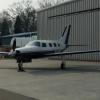LOP for a dummy?
-
Members Online
- Rick Junkin
- gdwinc
- catchman86
- BravoWhiskey
- RescueMunchkin
- Speed Brakes
- hammdo
- lamont337
- Justin Schmidt
- dkkim73
- pirate
- MarkL
- KSMooniac
- Marc_B
- 1967 427
- TCC
- 1980Mooney
- Scottknoll
- GeeBee
- Sabremech
- NickG
- pkellercfii
- Rmnpilot
- dzeleski
- PeteMc
- mooniac58
- Schllc
- Stealth Mooney
- ElkoRandy20J
- Air pirate
- mgtrevor
- Brian2034
- pyco85
- ta2too


Recommended Posts
Join the conversation
You can post now and register later. If you have an account, sign in now to post with your account.